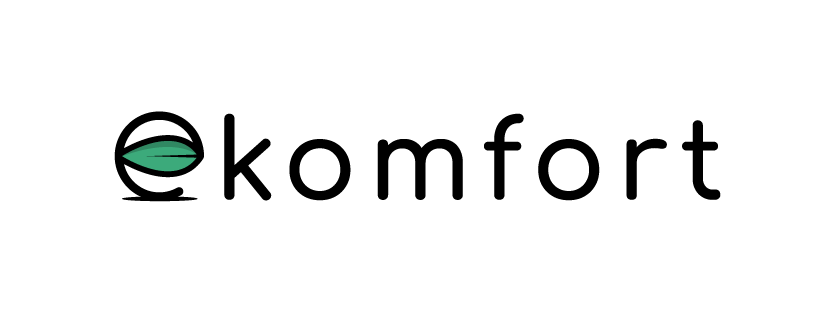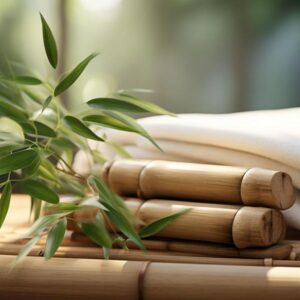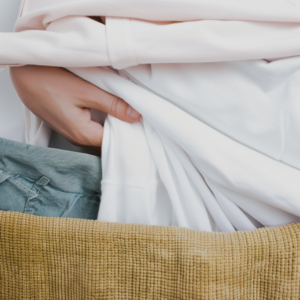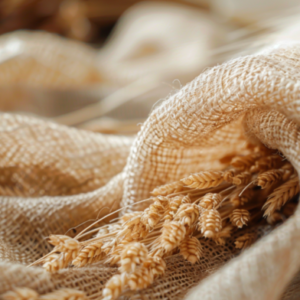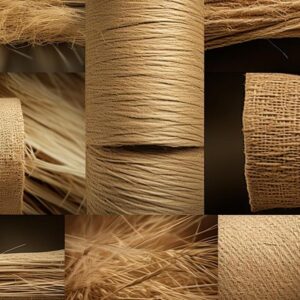Ramie: The thousand-year-old fiber revolutionizing ethical fashion
Ramie is much more than just a natural fiber. It’s an ethical, sustainable and environmentally-friendly lifestyle choice.
By Ekomfort Updated April 22, 2024
Reviewed By Serge Sakepa
Fact Checked By Ambra Barbon
Are you looking to adopt a more ethical and eco-friendly lifestyle, but don’t know where to start? Let me introduce you to ramie, an age-old plant fiber that could revolutionize your wardrobe in a sustainable and responsible way.
Key Takeaways
- Jute fiber is a natural, resistant, durable and flame-retardant fiber, ideal for eco-responsible fashion and decoration.
- Jute is an ancestral plant grown mainly in Asia, requiring little water or pesticides.
- The plant is transformed into a textile fiber through a natural retting process.
- Jute is an excellent material for furnishings, decorative accessories and reusable bags.
- Compared with hemp, jute has a simpler transformation process and a higher yield per hectare, making it more economical to produce.
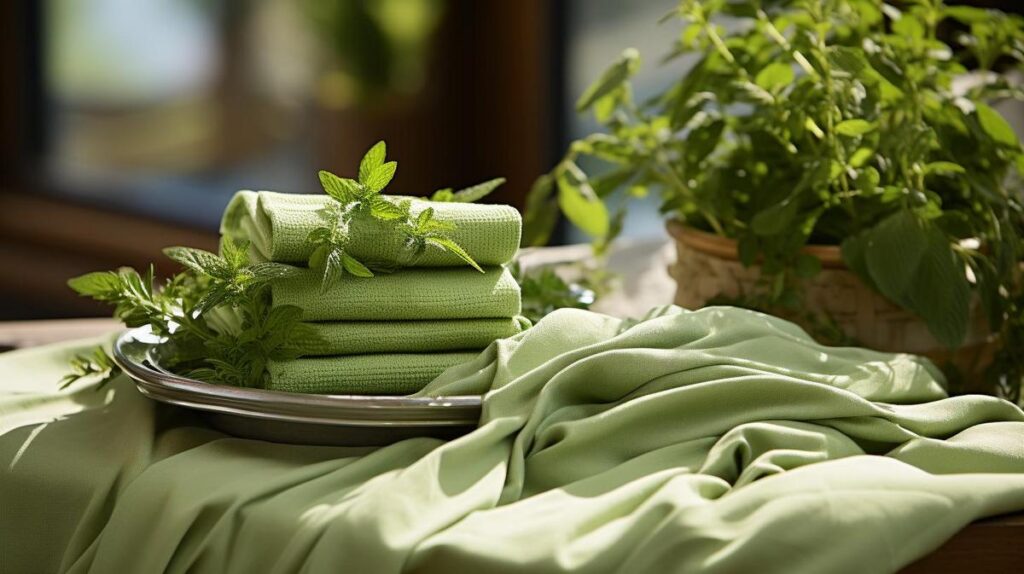
Ramie: a thousand-year-old textile treasure that combines tradition and modernity
Ramie, also known as Chinese nettle, is a plant fibre that has survived the millennia to establish itself as an ethical and sustainable alternative to the contemporary textile industry. Native to Asia, this member of the nettle family has been cultivated since time immemorial for its tough, versatile fibers, used to make fabric, rope and even paper.
Despite its ancient history, ramie is now enjoying a genuine revival, particularly among designers and brands concerned about their environmental impact. This natural fiber has unique technical and sensory properties, making it the material of choice for more responsible, innovative fashion.
Beyond its intrinsic qualities, ramie also embodies an authenticity and timelessness that resonate with the ethical and sustainable values held by a new generation of consumers. From China to Europe, via Latin America, this age-old fiber crosses time and borders, testifying to the richness of traditional know-how and its ability to adapt to contemporary challenges.
The origins of ramie: a plant fiber cultivated for millennia in China
Ramie is a herbaceous perennial native to East Asia, mainly China, where it has been cultivated for over 6,000 years. The first traces of its use date back to the Shang dynasty (1766-1122 B.C.), when ramie was used to make clothing, rope and paper.
Over the centuries, ramie cultivation has been perfected and processing techniques refined, giving rise to fabrics of great finesse and remarkable strength. Ramie was particularly prized by Chinese emperors, who made it a symbol of refinement and prestige.
The rebirth of ramie in the modern era: renewed interest in its unique properties
After a certain decline in the 20th century in the face of the rise of synthetic fibers, ramie is now enjoying a new lease of life in the textile industry. Its unique properties, combining strength, softness and durability, make it the material of choice for designers looking for natural, responsible materials.
Consumers’ growing ecological awareness has also helped bring ramie back into the limelight. Its environmentally-friendly cultivation, without pesticides or chemical fertilizers, and its biodegradability at the end of its life make it a sustainable alternative to conventional fibers.
What’s more, technological advances have optimized ramie transformation processes, making it more accessible and versatile. It is used in a wide variety of textile applications, from apparel and accessories to interior decoration.
Ramie, an authentic, timeless fiber that crosses time and borders
Beyond its technical and environmental qualities, ramie embodies a genuine history and a strong cultural identity. Rooted in an age-old heritage, this fiber is the living testimony of ancestral know-how handed down from generation to generation.
Today, ramie seduces with its authenticity and timelessness. It offers a unique alternative to conventional fibers, combining tradition and modernity in ethical and sustainable creations.
Its fascinating history and ecological potential make it a material of the future, capable of meeting the challenges of the 21st century textile industry. Ramie embodies a new vision of fashion, more responsible, transparent and respectful of the environment and people.
The undeniable ecological benefits of ramie fiber
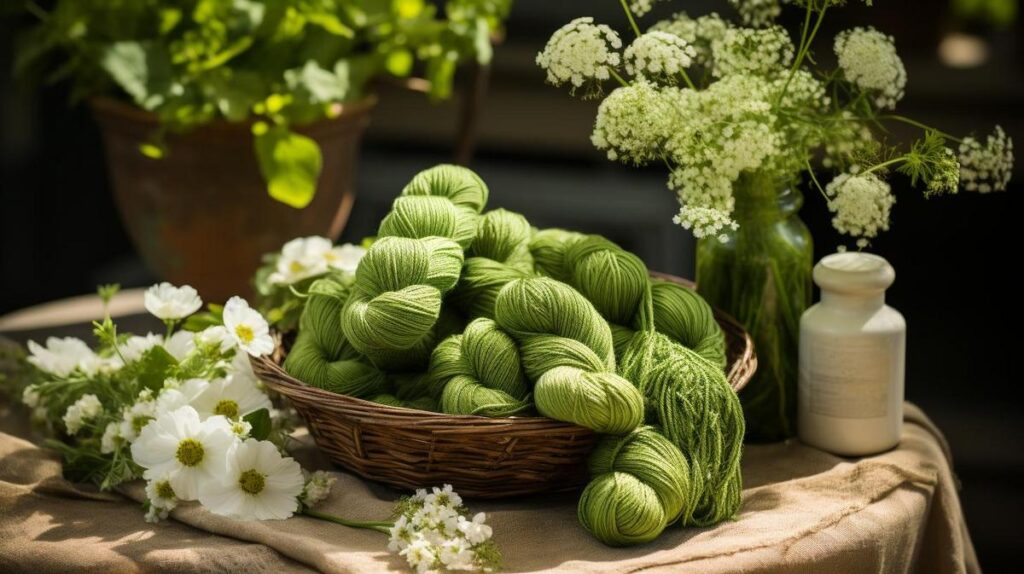
Ramie is a plant fiber distinguished by its many ecological advantages. From its cultivation to its end-of-life, this plant with its many virtues is part of a responsible and sustainable approach, offering a choice alternative to conventional fibers.
A 100% natural, biodegradable fiber, ideal for reducing your environmental footprint
Unlike synthetic fibers derived from petrochemicals, ramie is an entirely natural, biodegradable fiber. Derived from the bark of the Boehmeria nivea plant, it contains no harmful chemicals and can decompose naturally at the end of its life without polluting the soil or oceans.
This biodegradability is a major advantage at a time when the textile industry is being criticized for its disastrous environmental impact. By opting for ramie clothing, consumers can significantly reduce their ecological footprint and help preserve natural resources.
Ramie cultivation: a responsible and sustainable approach without pesticides or chemical fertilizers
Beyond its intrinsic properties, ramie is also distinguished by its environmentally-friendly cultivation methods. This hardy plant requires little water and can grow without the use of pesticides or chemical fertilizers.
Cultivating ramie is part of a sustainable organic farming approach that preserves soil quality and biodiversity. What’s more, the plant has depolluting properties and helps to regenerate land impoverished by other intensive crops.
This sustainable, responsible approach makes ramie a fiber for the future, in tune with current environmental issues and the expectations of consumers in search of ethical fashion.
Recyclable and compostable: ramie fits perfectly into a circular economy approach
As well as being biodegradable, ramie is also recyclable and compostable, making it a perfect part of a circular economy approach. Production waste can be reused to create new yarns and fabrics, limiting the waste of resources.
At the end of its life, ramie clothing can be composted and returned to the soil, nourishing it without leaving toxic residues. This ability to be part of a virtuous cycle makes ramie a material of choice for brands committed to circular, zero-waste fashion.
Thanks to its many ecological advantages, ramie has established itself as a sustainable and responsible alternative to conventional fibers. Its environmental potential makes it a material of the future, capable of reconciling fashion and ecology in a more virtuous textile industry.
The exceptional properties of ramie fabric for optimum comfort

Beyond its ecological advantages, ramie has unique technical and sensory properties that make it a material of choice for textile creations. Softness, resistance, thermoregulation… Its exceptional qualities offer optimum comfort and an unrivalled sensory experience.
Soft, light and breathable: ramie offers an incomparable sensory experience
Contrary to popular belief, ramie is a remarkably soft and fine fiber. Its silky, delicate feel makes it the material of choice for next-to-skin garments, offering an unrivalled sense of comfort and well-being.
The unique structure of ramie fibers also makes them exceptionally light and breathable. Ramie fabrics are particularly pleasant to wear, even in hot weather, and allow the skin to breathe naturally.
This incomparable sensory experience, combining softness, lightness and breathability, makes ramie a popular material for designers seeking comfort and well-being for their collections.
Thermoregulation and moisture absorption: major advantages for summer garments
Ramie’s natural thermoregulating properties make it ideal for summer clothing. Its ability to absorb moisture, up to 20% of its weight, efficiently wicks away perspiration and keeps you feeling fresh all day long.
What’s more, ramie fibers swell on contact with water, creating a natural barrier against heat. This unique property helps regulate body temperature, providing optimum comfort even in the hottest weather.
Thanks to its thermoregulatory properties, ramie is the material of choice for summer creations, combining style and well-being in lightweight, breathable pieces.
Resistance and durability: ramie, a textile investment that stands the test of time
In addition to its comfort qualities, ramie is characterized by exceptional strength and durability. Its fibers are naturally stronger than cotton or linen, giving garments and accessories excellent durability.
This increased resistance enables ramie parts to maintain their appearance and properties wash after wash, season after season. Investing in ramie creations means opting for durable, timeless pieces that will stand the test of time and trends without losing any of their quality.
This remarkable longevity makes ramie the material of choice for more responsible, sustainable fashion, encouraging sensible consumption and limiting the production of textile waste.
Thanks to its exceptional properties, combining softness, thermoregulation and resistance, ramie offers optimal comfort and a unique sensory experience. Its qualities make it a material of the future for ethical and sustainable fashion, combining well-being, style and environmental responsibility.
Ramie for ethical, responsible and vegan fashion
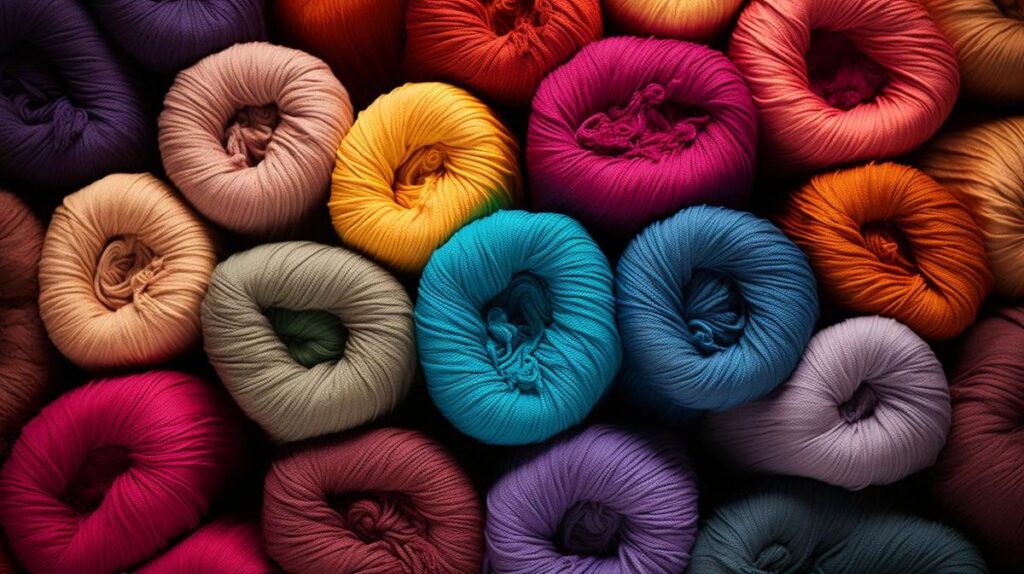
Beyond its technical and environmental qualities, ramie embodies the values of more ethical, responsible fashion that respects the living world. This age-old plant fiber is perfectly in line with the philosophy of veganism and the principles of slow-fashion.
A natural fiber in line with the values of veganism and slow-fashion
Ramie is a 100% vegetable fiber, requiring no animal products at any stage of production. It offers a choice alternative for vegans and vegetarians who want to dress ethically and consistently with their convictions.
What’s more, growing ramie is part of a sustainable organic farming approach that respects the soil and biodiversity. By choosing ramie garments, consumers can support more sustainable agriculture and promote fashion in line with the principles of slow-fashion.
This alignment with the values of veganism and responsible consumption has made ramie a material that has won acclaim from a new generation of committed designers, eager to offer ethical, meaningful fashion.
Transparency and traceability: essential guarantees for fairer fashion
Beyond its intrinsic qualities, ramie also offers the opportunity to return to a more transparent and traceable fashion. Thanks to its cultivation, mainly in China and Southeast Asia, it is possible to trace the fiber’s journey from the plant to the finished garment.
This enhanced traceability guarantees ethical and fair production conditions, with respect for workers and local communities. By choosing brands that offer full transparency on their ramie supply chain, consumers can support fairer, more responsible fashion.
This quest for transparency and fairness is fully in line with the philosophy of ethical and sustainable fashion, concerned with its social and environmental impact at every stage of production.
Ramie, a choice ally for responsible designers
Faced with an ecological and social emergency, more and more designers and brands are committing themselves to responsible fashion. Ramie is the material of choice to bring their ethical and sustainable collections to life.
Its environmental qualities, resistance and versatility make it an ideal medium for timeless, eco-designed creations. From clothing to accessories and home decoration, ramie offers an infinite range of possibilities for more virtuous fashion.
By working hand-in-hand with local producers and artisans, our committed designers also help to promote traditional know-how and maintain a more humane and equitable textile industry.
A true ally of ethical and responsible fashion, ramie embodies the values of a new generation of designers and consumers, eager to reconcile style, well-being and respect for the planet.
Innovations and future prospects for ramie in the textile industry

Thanks to its ecological advantages and unique properties, ramie is a fiber of the future for the textile industry. Driven by innovation and creativity, it offers many prospects for more sustainable and responsible fashion.
New production methods to optimize fiber quality and durability
Thanks to technological advances and research, new production methods are emerging to optimize ramie’s qualities. Innovative processes, such as the use of natural enzymes for fiber extraction, result in a finer, softer and more resistant ramie.
Conclusion
Ramie is much more than just a natural fiber. It’s a lifestyle choice that’s ethical, sustainable and respectful of the environment. By opting for ramie, you’re contributing to circular, fair trade and low-impact fashion. Whether you’re looking for clothing, accessories or home decor, ramie is the ecological alternative par excellence. Its exceptional technical properties, natural softness and ability to renew itself make it the ideal ally for a healthy, trendy and responsible wardrobe. So don’t wait any longer to join the ramie revolution and give positive meaning to your lifestyle!

